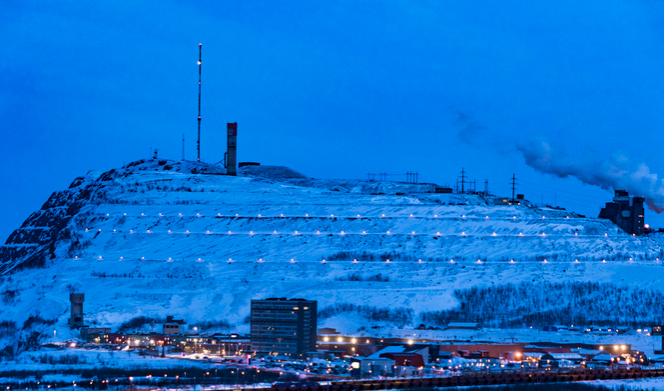
Since the launch of the first artificial satellite following World War II, the number of recorded resident objects in space has been steadily increasing. Currently, only thirty thousand objects larger than ten centimetres are being tracked out of an estimated one million objects larger than one-centimetre orbiting Earth. It is crucial to precisely monitor and predict the orbits of both debris and satellites to prevent potential collisions. However, for projection purpose the current physics-based algorithms may have errors on the order of kilometres, which is insufficient, especially considering that space debris typically has errors of less than one metre. This discrepancy is often attributed to unknown properties, such as the mass or shape of the space object, as well as inaccuracies in environmental factors like air drag, and uncertainties about the initial state of the space object’s journey. By mitigating the effects of non-conservative pressures and discerning the characteristics of unmeasured objects, operators can enhance orbit prediction accuracy by leveraging machine learning-powered artificial neural networks and data-driven methodologies for efficiency and mitigating errors.
It’s noteworthy that scientists have discovered over four thousand exoplanets beyond our solar system, some of which orbit multiple stars simultaneously. Unlike Earth, which takes 365.25 days to complete an orbit around its star, certain planets can accomplish this feat in just a few days. Additionally, some of these exoplanets have highly elliptical orbits around their respective stars. There are numerous hypotheses regarding the behaviour and locations of exoplanets, but there are physical limitations, particularly concerning the sizes of planets in terms of their mass and radius. In our solar system, there are two distinct types of planets: large, gaseous ones like Jupiter, and small, rocky, dense ones like Earth. Specifically, only a limited number of planets meet the criteria to be classified as super-Earths, characterised by a mass five to ten times greater than that of Earth and a radius one and a half to twice that of Earth. This raises the question: why are there no other super-Earths? Why do astronomers primarily observe massive gaseous planets and diminutive rocky ones? The answers are in a planet’s atmosphere, particularly during the crucial moment of its formation. The saying “when the roll of dice dictates, always include the square roots in the calculation” has been proven true.
When a star is born, a significant amount of gas accumulates, initiating rotation and ultimately resulting in a fusion reaction in the star’s core. However, there is excess gas and dust left over after the star’s formation, leading to the formation of a ring-shaped mass known as a stellar disk. Within this turbulent environment, dust particles collide and eventually form planets. As a planet’s size and gravitational pull increase, it can accumulate not only dust and pebbles but also the gas that shapes atmospheres. While the stellar disk contains a substantial amount of gas, the predominant elements are hydrogen and helium. This scarcity of rocky material in the disk complicates the emergence of planets capable of supporting extraterrestrial life. If a planet’s radius remains relatively small, its gravity may not be sufficient to retain a significant atmosphere, akin to Neptune or Jupiter. As the planet grows larger, it can accumulate more gas, potentially swelling to the size of Neptune or Jupiter. This creates a dichotomy: a planet can either remain small and rocky or evolve into a large, gaseous entity. The elusive middle ground, where a super-Earth might form, is challenging to achieve, as it necessitates precise conditions to prevent an influx of gas from inflating the planet. This precarious balance, known as unstable equilibrium, can easily tip, transforming a planet into a giant gas planet, or worst-case scenario, shredded into pieces of small rocky ones – some will be too small to be considered as planets. Keeping up with the fluctuated external environment while maintaining internal sustainability is key in maintaining the balance.
Interestingly, planets are not static in their orbits as they may migrate closer to their host star. As a planet approaches its star, its atmosphere heats up, causing particles to move rapidly and potentially escape the planet’s gravitational pull. This phenomenon could explain the existence of small rocky planets that are actually the cores of larger planets that lost their atmospheres. Thus, while super-sized rocky planets or diminutive fluffy planets may not exist, there exists a diverse array of planet sizes, shapes, and compositions. Planets form from the collapse of a cloud of gas and dust. They are a secondary outcome, as the majority of mass goes into forming the proto-star. The remaining dust and gas gather into a flat disc around the star, where particles condense and merge. As the star heats up, the inner part of the system becomes too warm for ices to form, resulting in the creation of rocky planets. Farther out, ices can condense and coat any rocky cores that have formed. Stellar activity also pushes gas away from the inner part of the system, eventually expelling it all, but the outer rocky cores can attract some of this gas. This leads to small rocky planets in the inner system and larger gaseous and icy planets with rocky cores in the outer system. Throughout this process, planets can shift positions due to interactions with the disc and mutual gravitational effects. Some are absorbed by the parent star, some are ejected from the system, and others swap places.
The gravitational interactions between planets cause their orbits to change over time. The current orbits may not reflect their original formation. Planets exert gravitational forces i.e. tug of war on each other when they are closest in their orbits. If these tugs occur at specific points in the orbit, they can alter the orbits of both planets. When orbital periods have whole-number ratios, these tugs happen evenly across multiple points in the orbit and cancel out, resulting in no net tug. This phenomenon is also observed in the moon systems of Jupiter and Saturn. Another aspect of the collapse process involves compressing gas and dust into a protoplanetary disk. Parts of the disk swirling in different directions collide, generating heat. This increased temperature resists further compression. However, when a mixture of elements is present, they can radiate heat away from the disk, allowing for continued compression under the influence of gravity. There are two significant scenarios in cosmology where this collapse mechanism fails: the first generation of stars formed after the Big Bang, which lacked sufficient heavy elements to radiate away the heat of compression, and the effects of Dark Matter, attributed to an unknown subatomic particle that interacts weakly with matter.
Current force models account for atmospheric density and air drag forces, but they typically have around a fifteen percent one-sigma accuracy. Many suggest replacing these empirical models with modern deep learning models. Grey-box models are gaining acceptance as they are more amenable to evaluation and can incorporate physics-aware constraints. In conclusion, machine learning techniques can enhance classical algorithms to better represent and understand underlying physical phenomena. Predictions may shift towards probability distributions rather than point-wise estimations, and the development of simpler, comprehensible grey-box models may become increasingly important. The real challenge lies in utilising these tools to gain a deeper understanding of the various subjects in the system, particularly the physical forces governing space. Achieving this requires a fusion of expertise from both the tech and space observation fields to foster diplomacy, collaboration, and understanding. This can be accomplished through the development of models that are mutually comprehensible and the introduction of innovative tools that bridge the gap between the two disciplines. Ultimately, this will lead to a more pragmatic, unified and practical approach to modelling physical processes.




